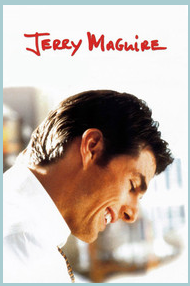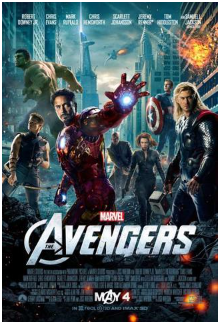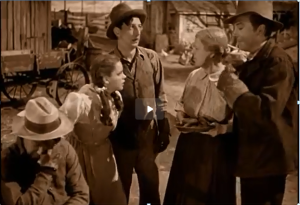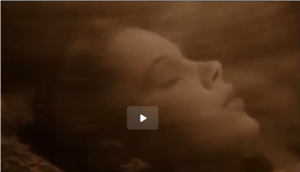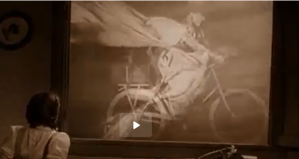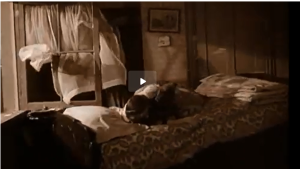The film Jerry Maguire features three prominent actors. Tom Cruise, Cuba Gooding Jr., Renée Zellweger. Tom Cruise has secured his fame as a ‘Star” actor. “He is a distinctive screen persona who is well known and popular with the movie going public, often to the point that some avid movie fans become deeply curious about the actor’s private life.” (Goodykoontz, 2014) You have to include Tom Cruise as a Hollywood star. As evident by his largely publicized divorce from Katie Holmes. Cruise’s religious beliefs are brought to center stage as a reason for their breakup. The avid movie fans became deeply curious about Tom’s support and connection with the Scientology religion that as it turns out has some moral and domestic issues with the movie going public and may have had some damaging publicity for the actor. However, Tom Cruise’s at 52 years old still has star power that has survived mostly because of his acting talent and devoted fans. His latest film Edge of Tomorrow critic Ben Mankiewicz admits “that the story is a recycled topic of people stuck in a time loop like Groundhog Day but Tom Cruise does his job very well.” (Mankiewicz, 2014) The fact that his star power can stand up to a certain amount of negative publicity is a credit to his acting talent and his avid devoted fans.
In the film Jerry Maguire Tom Cruise plays with a style of “realism,” (“gives the impression of genuine human action and reaction that is considered realistic and natural”) (Goodykoontz, 2014) in a naturalistic roll as a sports agent that is confronted with a moral dilemma that places him at odds with his large corporate Sports Agency he is fired. Armed with only one client (Cuba Gooding Jr.) and a shy bookkeeper (Renee Zellweger) Tom is confronted with challenges in his personal life he has never experienced. With the help of his client and bookkeeper he fights his way back to the top of his game with new found values and unconditional relationships with both. The realism Tom Cruise brings to the screen is evident in these clips from the movie titled “Play with Heart” and “Help me help you.”
http://movieclips.com/gpRQe-jerry-maguire-movie-play-with-heart/
http://movieclips.com/aKGt-jerry-maguire-movie-help-me-help-you/
Tom Cruise’s ability to play a variety of styles in rolls very different from each other like Top Gun, The Last Samurai, Interview with a Vampire, Rain Man, Vanilla Sky, The Firm, Far and Away, Mission Impossible, A Few Good Men, Legend, Losin’ It, Minority Report and many more. With these movies to his credit it is easy to classify Tom Cruise as a mega star.
Tom Cruise’s leading lady in Jerry Maguire is Renee Zellweger. Who may be classified as a method actor by some but her body of work as a personality actor may be closer to the truth. Renee has received Academy Award nominations for best actress in Bridget Jones Diary where her naturalistic style may have earned her the personality actor category. “Her performance is widely considered to be of a high standard, including her English accent.” (Maguire, 2001) The realism of Renee’s acting seems to come from such honesty it is likely to be the result of her method acting ability. By definition is “the Method requires that actors draw on their own memories and experiences to reach the heart of a character,” (Goodykoontz, 2014) Renee’s leading role in Jerry Maguire is a tribute to her ability to method act with such realism and a naturalistic personality it is hard to tell if it is method acting or not. Renee brings her talent in this scene from Jerry Maguire that brought her national attention became a household phase. “You had me at hello”
http://movieclips.com/fn9Z-jerry-maguire-movie-you-had-me-at-hello/
Renee’s talent as an actress could be classified as a “wild card” or “character actor” because she is “an actress who is difficult to classify as one certain type, often because he or she can play a wide variety of characters equally well without becoming typecast.” (Goodykoontz, 2014) Evident in her contrasting genres of movies, Renee shows her versatility in Jerry Maguire and Case 39. Whereas in Case 39 she plays a social worker who takes a case that turns out to be of the horror genre. Again in her role of Bridget Jones Diary and Bridget Jones Edge of Reason shows her ability to adapt to comedy roles and makes it hard to classify her other than a personality or wild card actress.
And finally Tom Cruise’s co-star Cuba Gooding Jr. as Ron Tidwell professional football wide receiver for the Arizona Cardinals. His character role in Jerry Maguire may earn him a promotion to a personality actor from the solid character actor he is. As a co-star his realism and naturalistic actor skills shines in Jerry Maguire. Cuba Gooding Jr. is a character actor because of the variety of characters he portrays equally well without being typecast. But as a Tom Cruise co-star he gives an Academy Award supporting actor performance in this movie clip titled “Not gonna cry”.
http://movieclips.com/ZQiXH-jerry-maguire-movie-not-gonna-cry/
Cuba’s movie list is an impressive one: Men of Honor, Instinct, Judgment Day, Selma, the Hit List, Life of a King, What Love Is, Radio, Red Tails, Firelight, Absolute Deception and many more. All of which qualifies him as a truly talented character actor. And a star in his own right.
References
Goodykoontz, B. &. (2014). Film: From watching to seeing (2nd ed.). San Diego, CA: Bridgepoint Education, Inc.
Maguire, S. (2001). Bridget Jones Diary. Retrieved from Movie Clips: http://movieclips.com/eRQu-bridget-joness-diary-movie-videos/
Mankiewicz, B. (2014, November 30). Edge of Tomorrow movie review. Retrieved from Ask.com/What The Flick?: http://search.tb.ask.com/search/video.jhtml?searchfor=Tom+Cruise+movie+reviews&cb=ZZ&pg=GGmain&qid=2071b123a2b1450eb40d4fedf654ba11&n=77DE8857&ss=sub&pn=1&st=hp&tpr=hpsb&vid=4U4v2C32OF0
